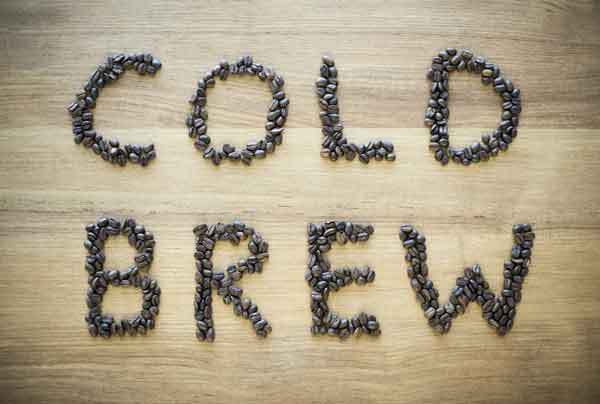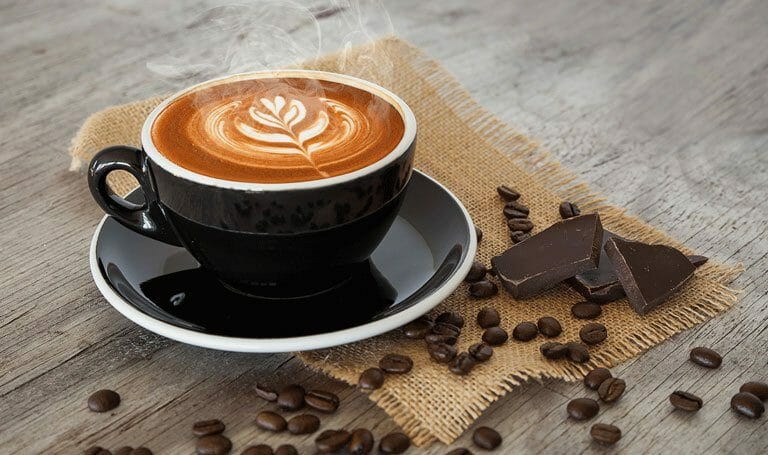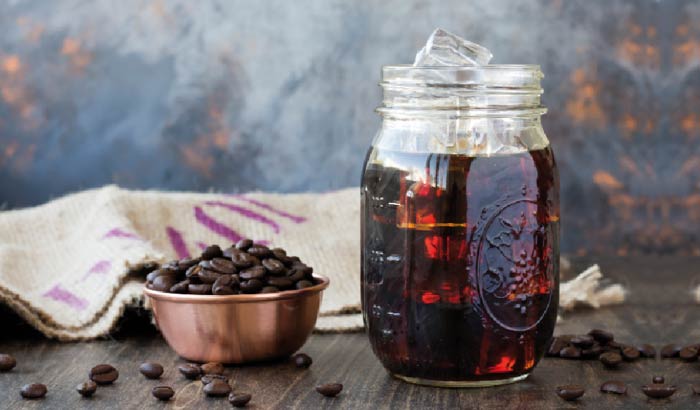Cold-brewed coffee – It`s hot

The brew can last from 4 hours all the way up to 24 hours, it must be drunk cold, and the coffee taste is more evident than in many other types of coffee.
Read below and find out why the cold coffee is “hot”.
First, an important fact: Cold-brewed coffee is not the same as ice coffee (where espresso-based coffee is served over ice, usually with milk and syrup). Cold-brewed coffee is cold brewed coffee.
The coffee type is easy to get because it requires no more than a jug, a filter, a little coffee, some water and a fridge.
Cold-brewed coffee is a growing trend that is gaining ground worldwide, and it has become popular with coffee lovers because it is the type of coffee that makes the aromas of coffee very evident.
Gradually, the drink is also found at coffee shops.
Many people experience cold-brewed coffee as a refreshing drink because it can appear mild, sweet and refreshing in taste.
It also has a lower acidity than other types of filter coffee and can also appear extra invigorating, as it has a higher caffeine content than different types of coffee.
An eco-friendly advantage of cold-brewed coffee is that it does not require heat or electricity.
Long brew time
However, when you want a cold-brewed coffee, you must have plenty of time set aside for a brew can last from 4 hours up to 24 hours.
The longer the coffee is brewed, the more developed & complex the taste will get.
The bonus of the long-brewing time is that you can look forward to a significantly different coffee taste than the one you know from other types of coffee.
In short, it can be said that the coffee bean gets optimal conditions and that the characteristics of the bean thus appear more clearly.
The taste changes in relation to coffee brewed traditionally are that the coffee is not exposed to hot water and high temperatures.
This means that many of the oils and fatty acids normally extracted from the coffee are not extracted and therefore, do not affect the taste.
For cold-brewed coffee, there are two different brewing methods
- Ordinary filter brewing, where water is poured through a filter,
- Or, filter brewing with a valve, where the water, as the name says, is controlled with a valve.
The latter is a slightly more advanced method than most have.
However, the advantage of this method is that the amount of water is precisely controlled.
In this way, coffee and water are only in contact with each other for a limited time.
By adjusting the valve and the drip speed, you can control the brewing time and thus to a great extent also the taste.
Expert recommends: Roasting is crucial
Michael de Renouard is one of Scandinavia’s top coffee experts and co-owner of “The Factory Roast Lab” in Copenhagen, Denmark.
His knowledge of coffee is beyond comprehension, and his passion for coffee is just as great.
When he drinks cold coffee, he first brews it hot.
“I brew my cold coffee on filter coffee and I brew it hot first. then I shake the hot coffee with lumps of ice in a bag so they don’t dilute the coffee.
Coffee, I think, is by far the best taste when it is brewed hot and immediately after that is cooled and served”.
Michael de Renouard hopes that the professional places will soon get better at controlling the cold brewing process, as the cold coffee may tend to get a little dull:
“I hope that cafes here at home will soon be able to control cold-brewed coffee because I do not think that many cafes can make a good cold coffee drink.
When a cold-brewed coffee is made incorrectly, it can often lack edge because it is oxidized and has become dull.
The reason is that many coffees are simply roasted incorrectly in comparison to it being a refreshing experience.
Dark roasted coffees with efficient internal combustion during roasting create too many aromas and leave too little natural sweetness in the beans.
You could say that you can then adjust with sugar, but it does not improve the taste of a too dark roasted coffee, which lacks subtle fruit acids and finesse of the taste ”.
Recipe:
- Use 100-120 grams of freshly ground coffee per. litres of water
- Grind the coffee roughly as if it were to be used in a French press.
- Pour cold water over the coffee. For example, use a Chemex glass jug
- Leave to cool for 2-24 hours
- Taste the coffee continuously
- When you hit the flavour you want, the coffee is filtered through a coffee filter
- The coffee can stay up for two weeks in the fridge
Which coffee is suitable for cold brewed coffee?
- If you want the taste of classic good, round, sweet and light, fresh coffee, try with a coffee from Colombia.
- If you want the taste of fruit, acid, and freshness, try a coffee from Ethiopia.
The good taste is of course individual, so try it out…
If the taste is not quite to your liking…
Brewing time: If you are not satisfied with the taste of your cold-brewed coffee, it is a good idea to change the brewing time.
Try taking the coffee out of the fridge occasionally and taste how it develops.
Quantity: If the coffee is too strong, reduce the amount of coffee by 5 grams.
On the other hand, if the coffee is too thin, give it 5 grams extra and try again.
Grinding degree: It is important that the coffee is ground on a proper grinder, where you have the opportunity to change the grinding degree.
Make sure you get an even grind – preferably a little finer than coarse kitchen salt.
Nitrogen coffee – Made with cold brewed coffee
Cold-brewed coffee with nitrogen (nitrogen) is a new trend that is already widespread in the US. It is a form of ‘coffee on a dish’, where the coffee is poured under pressure through a filter with tiny holes.
The result is a cold, silky-creamy coffee that can be reminiscent of a Guinness beer in its texture.
I will make a follow-up article, on this type of coffee drink another time.






